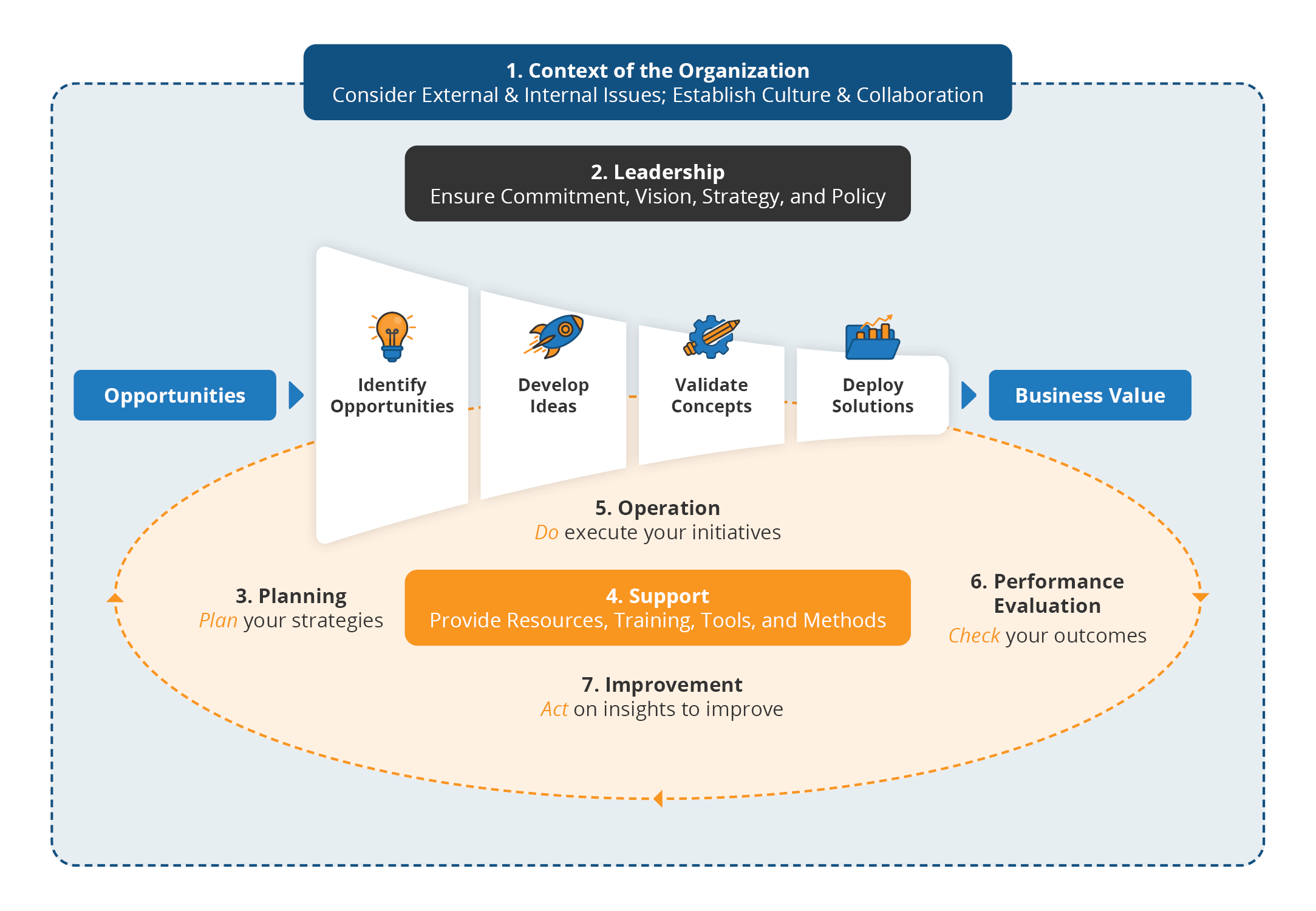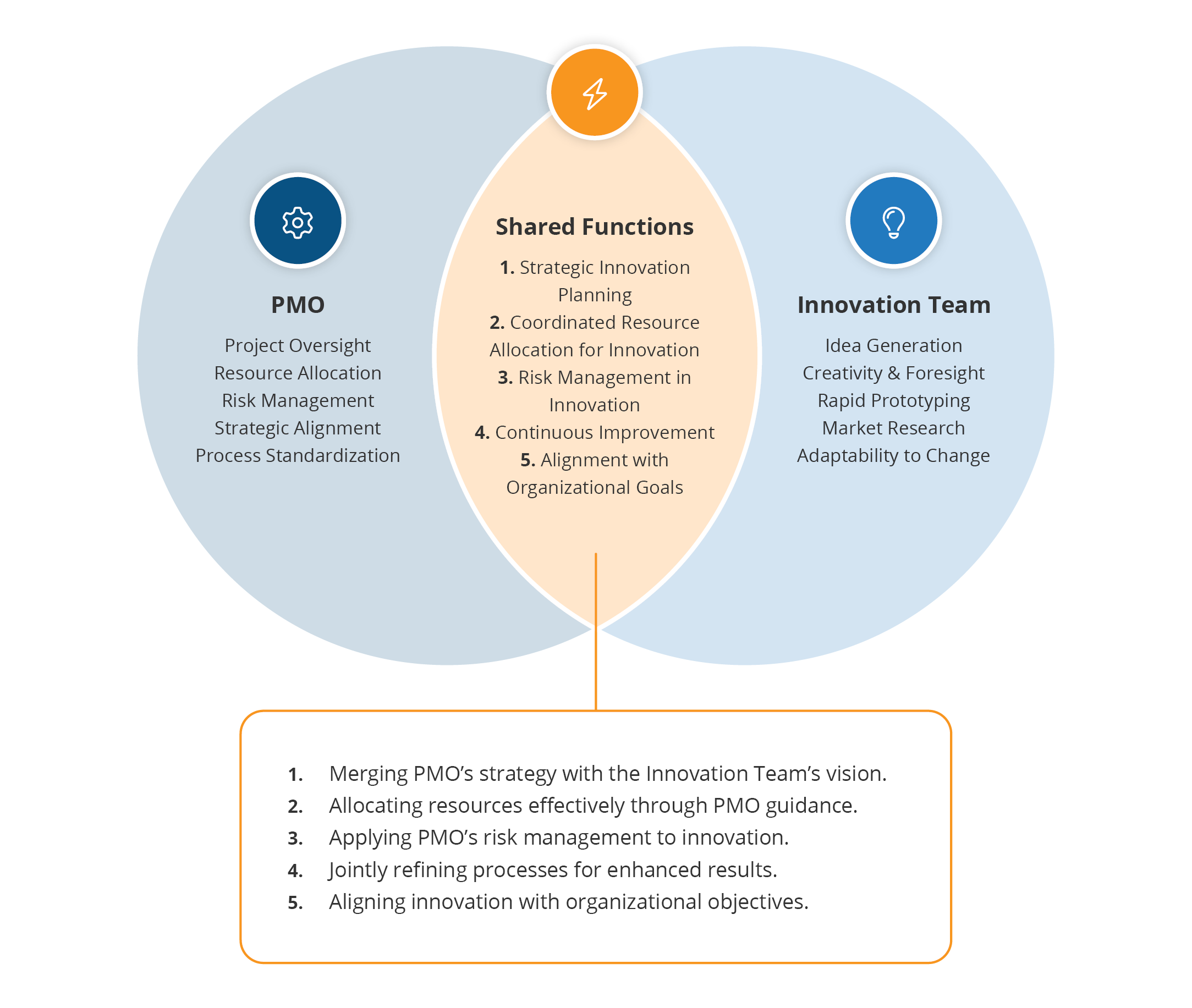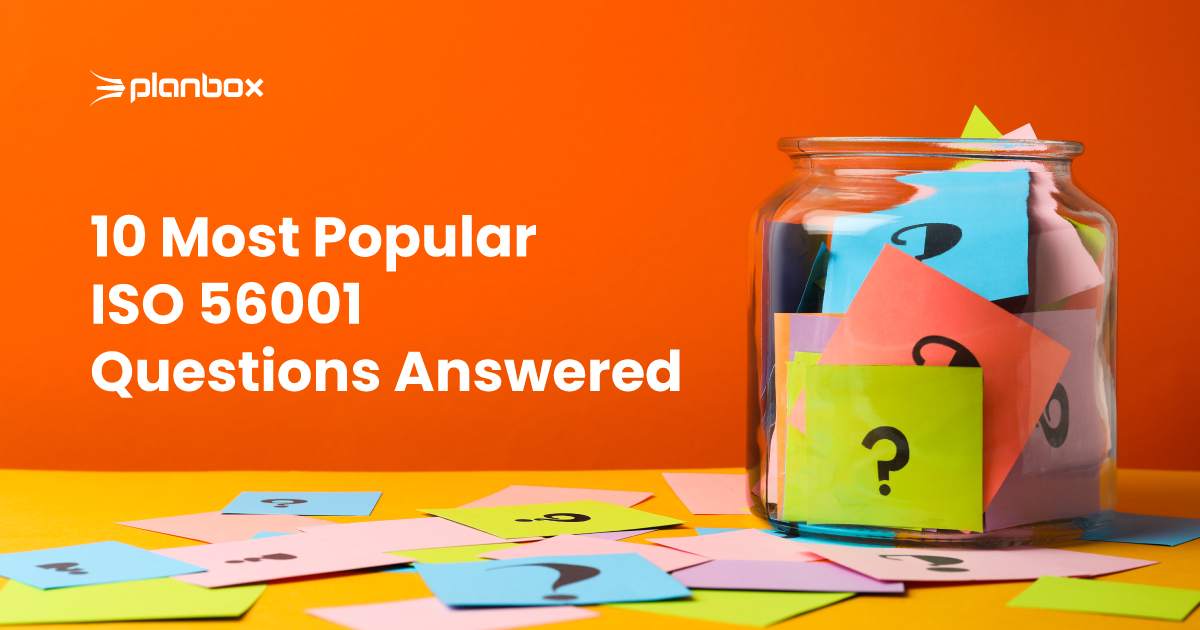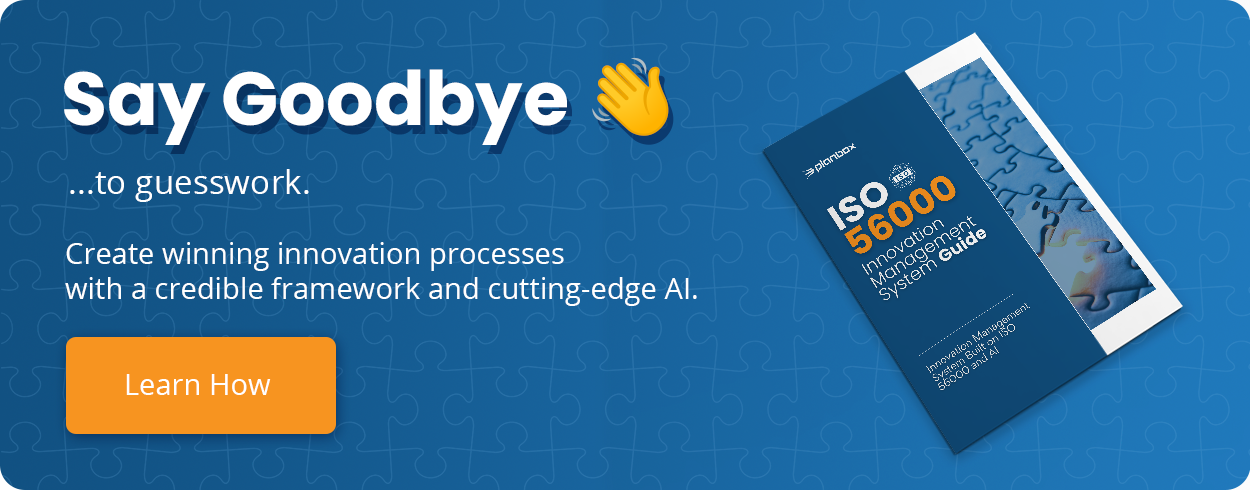Mark your calendar; 2024 is the year when Innovation Management takes a giant leap forward with the introduction of ISO 56001. This long-anticipated standard is set to revolutionize how organizations conceive and bring innovations to market. ISO 56001 serves as the blueprint for constructing a robust Innovation Management System (IMS), promising consistent and sustainable innovation results.
In this blog, we aim to tackle the ten most commonly asked questions about ISO 56001 by innovation practitioners. Our focus is to offer best practice advice that not only ensures compliance but also maximizes value in the short, medium, and long term. We’ll explore how fostering a culture that embraces a future-fit mindset can be achieved by leveraging ISO 56001 as a tool to enhance creativity and innovation.
“
The key lies in creating a culture of innovation that values creativity while ensuring a structured approach to execution.
1. How Does ISO 56001 Balance Creativity with Standardization?
Establishing an innovation standard, as facilitated by ISO 56001, is not about stifling creativity or impeding execution. Instead, it’s a framework designed to enhance the innovation process. The key lies in creating a culture of innovation that values creativity while ensuring a structured approach to execution.
When implementing ISO 56001, it’s crucial to emphasize that the workflow being proposed remains adaptable and unique to each company’s operating style. The standard provides a flexible framework that organizations can tailor to fit their specific needs. This allows for the preservation of the creative spirit within the company, ensuring that the innovation standard enhances, rather than hinders, the ideation and execution processes.
2. What Competitive Advantages Does ISO 56001 Offer?
ISO 56001 sets a global benchmark for innovation management, but its real value lies in how it can be strategically leveraged to create competitive differentiation. This standard is not just a checklist; it’s a framework that, when applied thoughtfully, can propel an organization ahead of its competitors.
Here some key aspects where ISO 56001 can drive strategic advantage:
- Customized Implementation for Unique Value: While the standard is universal, its implementation is not one-size-fits-all. Each organization can adapt the framework to their specific strategic goals and market position, crafting an approach to innovation that sets them apart from competitors.
- Driving Market Leadership through Innovation: ISO 56001 encourages organizations to prioritize innovation strategically. This forward-thinking approach can position companies as market leaders, setting trends rather than following them.
- Building a Strong Innovation Brand: Consistent adherence to ISO 56001 elevates a company’s reputation as a serious innovator. This enhanced brand perception can be a key differentiator, especially in industries where innovation is a critical factor for success.
- Fostering Collaborative Innovations: The standard promotes collaboration both within the organization and with external partners. This can lead to more groundbreaking innovations, as diverse perspectives and expertise converge.
3. Is ISO 56001 Certification Worth It?
While ISO 56001 certification is not mandatory, it offers tangible benefits (as detailed in our ultimate guide on ISO 56000) that can significantly improve organizational performance in innovation management.
Here are just a few key benefits of obtaining certification:
- Systematic Innovation Process: Certification ensures that an organization adopts a systematic approach to innovation, which can lead to more consistent and repeatable success in innovation initiatives.
- Enhanced Stakeholder Confidence: Achieving certification can boost stakeholder trust, as it demonstrates a commitment to maintaining high standards in innovation management.
- Operational Efficiency: With a structured approach, organizations can streamline their innovation processes, reducing inefficiencies and focusing resources more effectively.
- Risk Management and Compliance: The certification process helps identify and manage risks associated with innovation, ensuring compliance with industry standards and best practices.
- Global Recognition and Opportunities: Certified organizations gain international recognition for their commitment to innovation excellence, opening doors to global markets and partnership opportunities.
4. Where Should Organizations Start with ISO 56001?
Begin with an understanding of your current practices by performing an innovation health checkup. Develop a roadmap based on your organization’s needs, involving key stakeholders. A phased approach, integrating Future-Fit principles, ensures a smooth transition.
As a valuable addition, leverage ISO 56004, the Innovation Management Assessment (IMA), to conduct a benchmark and gap analysis. This will provide a clear, thorough understanding of your current innovation maturity and help you identify areas for improvement. By using ISO 56004, organizations can strategically build from their existing strengths and address specific gaps in innovation management, ensuring a more targeted and efficient implementation of ISO 56001.
Watch our expert-led webinar to gain further insights into the checks and balances of ISO 56001:
5. What Are the Costs and Time Required for ISO 56001 Compliance?
Timelines and costs vary based on organizational size and complexity. Invest in training to empower your team and expedite the adoption process. Determining the timeline and financial investment for ISO 56001 compliance involves various factors. For example for a large organization, the implementation process may range from 12 to 18 months on average, allowing for a thorough integration without rushing critical steps.
As for costs, the investment can vary and it is difficult to state an exact figure. These related costs can encompass expenses related to training, software adoption, consulting services, and internal resource allocation. It’s essential to conduct a detailed assessment and engage with experienced domain experts to derive more accurate estimates tailored to the specific nuances of your organization.
“
Embracing a dedicated software platform for ISO 56001 compliance becomes not just a choice but a strategic necessity.
6. Is Software Necessary for ISO 56001 Compliance?
Embracing a dedicated software platform for ISO 56001 compliance becomes not just a choice but a strategic necessity. The adoption of a comprehensive software system brings transformative benefits to the compliance process. Beyond mere convenience, it serves as a vital tool that simplifies the attainment and maintenance of compliance.
The right software can streamline the entire compliance lifecycle, reducing complexities associated with documentation, tracking, and reporting. It simplifies the process of adhering to ISO 56001 standards by providing a centralized platform for managing the related innovation workflows, documentation, and collaboration. By automating these processes, the software minimizes the resource-intensive nature of compliance efforts, freeing up valuable time and resources for more strategic innovation pursuits.
Furthermore, the software system ensures instant audibility, transparency, and reporting capabilities, aspects that would traditionally demand substantial resources and time. Instead of sifting through paperwork and coordinating disparate information, organizations gain real-time insights into their compliance status. This not only enhances operational efficiency but also facilitates quick and informed decision-making.
7. How Does ISO 56001 Integrate with Other ISO Standards?
Leverage synergies between ISO standards, ensuring a holistic approach to governance. A Future-Fit organization integrates ISO 56001 into its existing frameworks, creating a unified approach to management systems. The integration of ISO 56001 with existing ISO standards, particularly ISO 9001 for quality management and ISO 14001 for environmental management, is a strategic move that amplifies organizational governance.
By aligning ISO 56001 with ISO 9001, the focus on quality seamlessly extends to innovation processes, ensuring that innovative initiatives meet the same rigorous standards as other business operations. Concurrently, incorporating ISO 14001 into the mix enhances environmental sustainability considerations within the innovation life cycle. This triad of standards establishes a robust framework, promoting a holistic, efficient, and integrated approach to organizational excellence.
The interplay between ISO 56001, ISO 9001, and ISO 14001 ensures that innovation, quality, and environmental management mutually reinforce each other, fostering a culture of continuous improvement and excellence across diverse organizational facets.
8. Why is the PDCA Cycle Crucial in ISO 56001?
The PDCA (Plan-Do-Check-Act) cycle is the backbone of ISO 56001. This iterative framework, with its origins attributed to the pioneering work of statistician Walter A. Shewhart has evolved into a cornerstone of quality management and continuous improvement methodologies. The PDCA cycle entails a systematic approach:
- Plan: Define objectives and processes necessary to deliver results that align with innovation goals.
- Do: Implement the planned processes, keeping in mind the variables identified in the planning phase.
- Check: Monitor and evaluate the implemented processes against objectives and specifications to ensure alignment.
- Act: Take corrective actions and make necessary adjustments based on the evaluation, closing the loop and initiating a new cycle.
 Displayed above is the integration of the PDCA cycle within the ISO 56002 framework. Each number corresponds to one of the seven guiding elements outlined in the ISO 56002 guidance standard.
Displayed above is the integration of the PDCA cycle within the ISO 56002 framework. Each number corresponds to one of the seven guiding elements outlined in the ISO 56002 guidance standard.
The beauty of the PDCA cycle lies in its adaptability and applicability across various ISO standards, providing a universal framework for continuous improvement. Whether in quality management (ISO 9001), environmental management (ISO 14001), or information security management (ISO 27001), the PDCA cycle serves as a unifying thread.
Integrating the PDCA cycle into ISO standards ensures a consistent and dynamic approach to management systems. The PDCA cycle is instrumental in creating a feedback loop, allowing organizations to refine their innovation processes iteratively, ensuring they stay responsive to evolving market dynamics and organizational goals.
9. What Role Should the PMO Play in ISO 56001 Adoption?
The Project Management Office (PMO) and innovation management team are the most logical choices for leading the effort towards ISO 56001 certification. The PMO brings project management skills and experience, while the innovation management team brings expertise in innovation processes and outcomes. By working together, the PMO and innovation management team can ensure that the implementation of ISO 56001 is successful and that the organization is able to achieve its goals. The PMO also plays a crucial role in ensuring that the innovation management processes and procedures are followed consistently throughout the entire organization, establishing a proper progress reporting structure, developing an innovation management charter, and building an innovation center of excellence. Organizations that choose to collaborate in this way are likely to achieve ISO 56001 certification more quickly and with fewer challenges than those that do not.
The PMO also plays a crucial role in ensuring that the innovation management processes and procedures are followed consistently throughout the entire organization, establishing a proper progress reporting structure, developing an innovation management charter, and building an innovation center of excellence. Organizations that choose to collaborate in this way are likely to achieve ISO 56001 certification more quickly and with fewer challenges than those that do not.
10. Is ISO 56001 Suitable for All Industries and Organization Sizes?
ISO 56001 is adaptable across industries and organization sizes. Its flexibility allows customization to meet the unique needs of diverse sectors, but it’s particularly compelling for:
- Companies Bidding for Business: As organizations bid on projects and contracts, the need to demonstrate a high level of focus and discipline in innovation becomes a competitive advantage. ISO 56001 certification may soon evolve from a choice to a business requirement, providing a tangible showcase of an organization’s commitment to systematic innovation management.
- Industries Valuing Innovation: Industries that inherently place a higher premium on innovation, such as technology, healthcare, and research, find ISO 56001 particularly valuable. The standard offers a structured approach that aligns with their innovation-centric ethos, providing a clear roadmap for sustainable and impactful innovation.
- Long-Term and Transformative Innovations: Organizations committed to long-term and transformative innovations, where the stakes are high, find ISO 56001 indispensable. The standard facilitates the cultivation of a disciplined innovation culture, ensuring that these organizations can navigate the complexities of transformative initiatives effectively.
- Larger Companies with Complex Innovation Processes: Larger enterprises, with more intricate and multifaceted innovation processes, stand to derive substantial value from ISO 56001. The standard provides a systematic framework to manage the complexities of innovation at scale, ensuring efficiency, transparency, and continuous improvement.
Wrapping Up
ISO 56001 brings a disciplined and transparent approach to innovation management, removing the veil that often shrouds organizational processes, ultimately empowering innovation practitioners by providing them with the visibility needed to invest confidently in the future. Alongside the standard, a future-fit mindset plays a crucial role, ensuring organizations do more than just comply—they actively leverage the standard as a strategic asset for ongoing success.
By embracing ISO 56001 and incorporating Future-Fit principles, organizations can begin a transformative odyssey towards a future where innovation is not just an objective but a fundamental aspect of their culture and operations.


